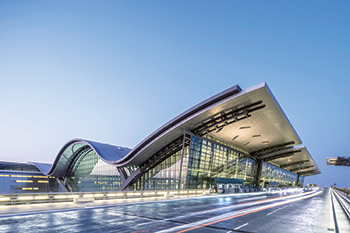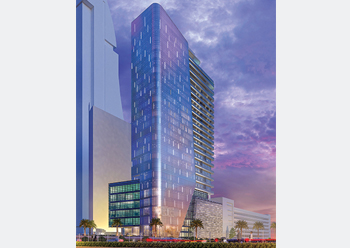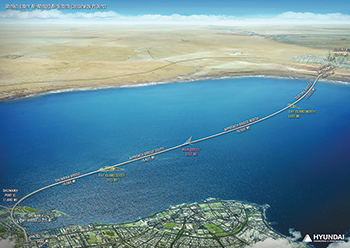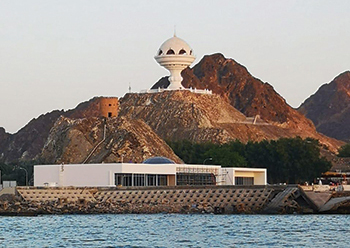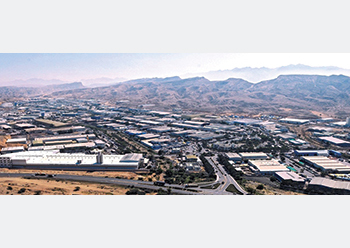
 The Al Janoub Stadium in Al Wakrah ... now open.
The Al Janoub Stadium in Al Wakrah ... now open.
A stadium designed by Zaha Hadid Architects (ZHA) – along with global infrastructure company Aecom – has opened in Qatar. The Al Janoub Stadium was the first stadium commissioned for the 2022 Fifa World Cup.
As one of the venues of the 2022 World Cup, the stadium will host the group and quarter-final matches of the tournament. It is located in Al Wakrah, 23 km south of Doha and will be connected to the capital via the Red Line of the new Doha Metro system.
The 40,000-seat football stadium could be reduced to a 20,000-seat capacity one in its legacy mode following the tournament – the optimum capacity for legacy use as the home ground to Al Wakrah Sport Club professional football team of the Qatar Stars national league.
These temporary seats have been designed to be demountable and transportable to a developing country in need of sporting infrastructure for post-tournament usage.
The stadium also boasts an operable roof designed by Schlaich Bergermann Partner and a seating bowl cooling system that ensures the stadium can be used during Qatar’s summer months.
The operable roof has been designed in sympathy with the cladding using pleated PTFE fabric and cables. Once deployed, the roof operates like a sail to cover the oculus above the field of play and create a sheltered environment for football during the summer, said ZHA.
Passive design principles along with computer modelling and wind tunnel tests were used to maximise the effectiveness of the physical enclosure to ensure player and spectator comfort, it stated.
Given the stadium’s context within the coastal city of Al Wakrah, the developers asked for a design that reflects the maritime traditions and history of the location, in particular, the traditional boat of the region, the dhow. ZHA responded with a design that incorporates these cultural references in an abstracted manner and combines them with practical responses to the climate, context and the functional requirements of a football stadium.
According to ZHA, the stadium’s roof design was an abstraction of the hulls of dhows turned upside-down and huddled together to provide shade and shelter. This is expressed in the stadium’s envelope geometry, details and selected materiality, including the roof’s beam structure that echoes the interior structure of a dhow’s hull.
The facades of the stadium are slanted outwards, tapered in elevation and reminiscent of the pleating of a dhow’s sails. The image of the dhow is further emphasised through the large overhang of the stadium’s eaves that incorporates strips of metal cladding reminiscent of the timber structures used in a dhow.
The stadium’s opaque roof and wall areas are expressed as pleated cross sections. This feature, which has its origins in Arabic motifs and calligraphy, adds texture to the outer shell and also emphasises the stadium’s unique geometry.
The external cladding materials are deliberately selected from a limited palette of materials and choice of colours; namely white for the roof and wall cladding, and darker colours for the areas below the eaves, including the lower level curtain walling with its ornamental lattice screen print that provide shading, it stated.





















_0001.jpg)


.jpg)
















.jpg)








.jpg)



.jpg)

